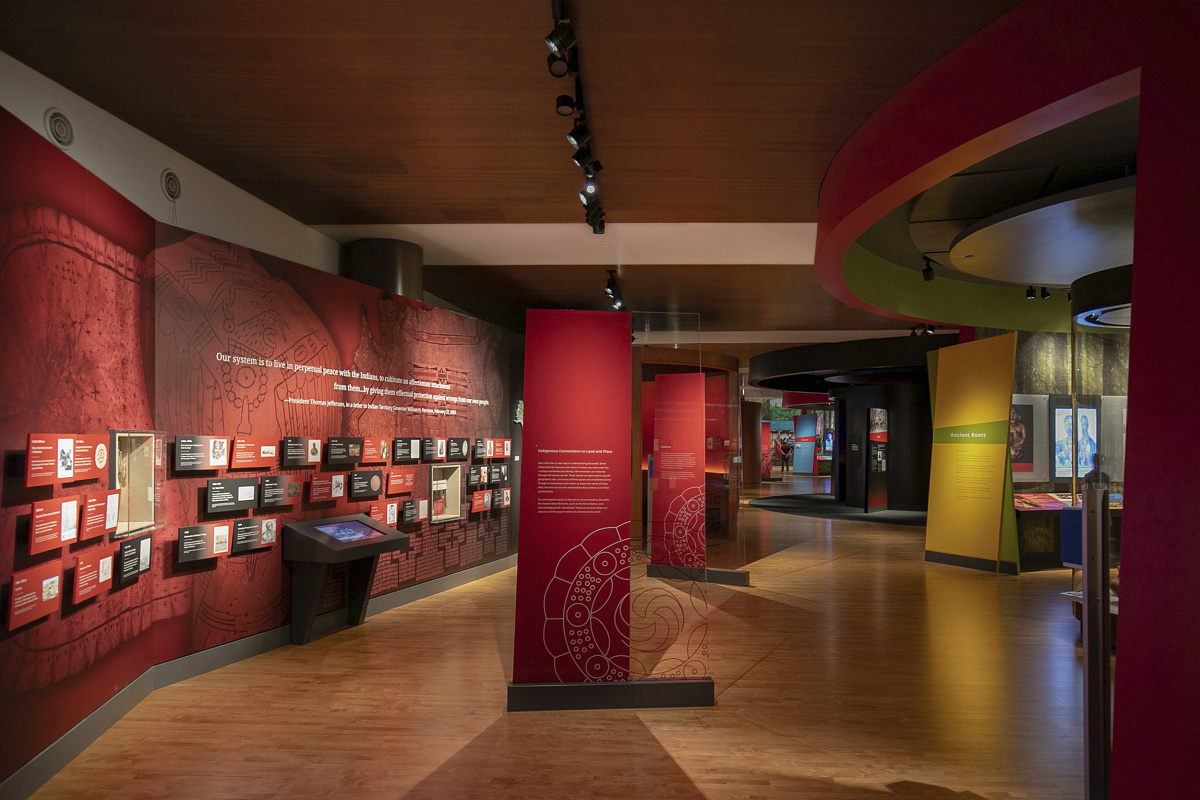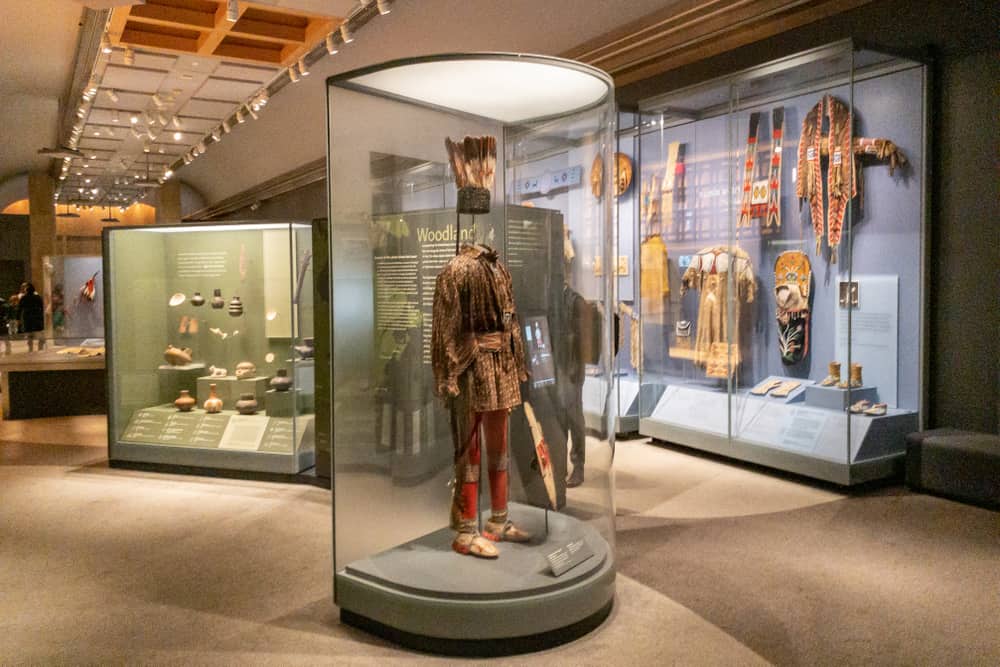
Engaging with Indigenous Heritage: A Comprehensive Guide to Contacting Native American Museums
Abstract: Native American museums and cultural centers serve as vital institutions for the preservation, interpretation, and revitalization of Indigenous cultures, histories, and contemporary lives. Beyond mere repositories of artifacts, they are often community hubs, educational centers, and crucial advocates for tribal sovereignty and cultural self-determination. This article provides an in-depth, scholarly guide to understanding and effectively utilizing the contact information for these unique institutions. It delves beyond standard addresses and phone numbers to explore the multifaceted purposes of engagement, best practices for communication, and the underlying cultural protocols necessary for respectful and productive interaction with organizations dedicated to the rich and diverse heritage of Indigenous peoples across North America.
Introduction: The Significance of Native American Museums
Native American museums and cultural centers represent a distinct and increasingly influential segment within the global museum landscape. Unlike traditional Western museums, which historically often presented Indigenous cultures through an ethnographic or anthropological lens, these institutions are predominantly, though not exclusively, founded, managed, and guided by Native American individuals and tribal nations themselves. Their primary mission extends beyond mere exhibition to encompass cultural preservation, language revitalization, education, community empowerment, and the assertion of Indigenous narratives and sovereignty. Consequently, engaging with these institutions requires an understanding that transcends typical museum interactions, emphasizing respect for cultural protocols, historical context, and the dynamic nature of living cultures.

The availability and appropriate use of contact information are therefore paramount for anyone seeking to learn, research, collaborate, or simply visit. This article aims to provide a comprehensive framework for navigating these channels effectively, transforming a simple inquiry into a culturally sensitive and mutually beneficial interaction.
The Multifaceted Nature of Native American Museums
To appreciate the nuances of contacting Native American museums, it is essential to first understand their diverse forms and functions:
- Tribally-Operated Museums: Directly governed by sovereign tribal nations, these institutions are deeply embedded within their respective communities. They prioritize the perspectives, values, and educational needs of their people, often serving as critical sites for cultural continuity and intergenerational knowledge transfer.
- Pan-Indian Institutions: Museums like the Smithsonian’s National Museum of the American Indian (NMAI) or the Heard Museum in Phoenix, Arizona, serve broader audiences and represent a multitude of Indigenous cultures. While not tribally specific, they often work in close collaboration with tribal communities and Indigenous scholars.
- Cultural Centers: Many Indigenous communities maintain cultural centers that may or may not be formally designated as "museums" but function similarly in terms of preserving and presenting cultural heritage. These are often grassroots initiatives and vital community spaces.
- University-Affiliated Collections: Some universities house significant collections of Native American art and artifacts, often with dedicated staff and programs that engage with Indigenous communities.

Regardless of their specific structure, these institutions share a common commitment to authentic representation, decolonization of narratives, and the empowerment of Indigenous voices. This shared ethos directly influences how they prefer to be contacted and what types of inquiries they are best equipped to handle.
Standard Contact Avenues and Their Applications
Like any modern institution, Native American museums provide several standard methods for contact, each suited for different types of inquiries:
-
Official Websites: The museum’s website is invariably the first and most comprehensive point of contact. It typically includes:
- General Contact Forms/Emails: For non-urgent inquiries, general information, or feedback.
- Staff Directories: Often listing specific departments (e.g., collections, education, research, repatriation) and their direct email addresses or phone extensions. This is crucial for targeted inquiries.
- Visitor Information: Hours of operation, admission fees, directions, accessibility details.
- Exhibition Schedules & Program Calendars: For planning visits or participating in events.
- Research Policies & Forms: For scholars seeking access to archives or collections.
- Repatriation Policies & Contact: A critical section for inquiries related to the Native American Graves Protection and Repatriation Act (NAGPRA) or other cultural heritage concerns.
- Gift Shop/Online Store: For supporting the museum through purchases.
- Donation/Membership Information: For individuals or organizations wishing to provide financial support.
-
Telephone: For urgent inquiries, direct communication with specific departments, or when a detailed discussion is required. It’s advisable to check website hours of operation before calling.
-
Physical Address: Essential for postal correspondence, formal requests, or planning an in-person visit. For tribal museums, the physical address might also signify the museum’s location within a sovereign tribal nation, which can have implications for legal or formal communications.
-
Social Media Platforms: Many museums maintain active presences on platforms like Facebook, Instagram, or X (formerly Twitter). These are excellent for following updates, events, and engaging with public announcements, but generally not suitable for formal inquiries or sensitive topics. Direct messages might be monitored but should not replace official email or phone for substantive matters.
Strategic Engagement: Purposes of Contact
Understanding why one is contacting a Native American museum is as important as how. Different purposes necessitate different approaches and often specific contact points.
-
Public Information & Visitor Experience:
- Purpose: Inquiries about current exhibitions, events, accessibility, group tours, or general visitor services.
- Contact Method: Website FAQs, general contact forms, or the main phone line.
- Best Practice: Be clear and concise with questions. Check the website thoroughly first, as most common queries are addressed there.
-
Academic & Archival Research:
- Purpose: Accessing collections (artifacts, documents, photographs), conducting scholarly research, or consulting with museum experts.
- Contact Method: Directly contact the Collections Manager, Archivist, or Research Department via email, often after reviewing specific research request forms on the website.
- Best Practice: Provide a detailed research proposal, outlining methodology, scope, and anticipated outcomes. Be prepared to adhere to specific protocols regarding handling artifacts, intellectual property, and potentially, cultural sensitivities. Understand that access may be restricted for culturally sensitive materials.
-
Community & Tribal Relations:
- Purpose: For tribal members, researchers working with specific communities, or organizations seeking to collaborate on projects directly benefiting Indigenous communities.
- Contact Method: This often requires direct engagement with tribal leadership or specific cultural department heads, which may be facilitated through the museum.
- Best Practice: Emphasize respect, reciprocity, and long-term relationships. Understand and adhere to tribal protocols, which may differ significantly from Western academic or institutional norms. Patience and building trust are paramount.
-
Repatriation & NAGPRA Inquiries:
- Purpose: Inquiries concerning the return of ancestors’ remains, funerary objects, sacred objects, or objects of cultural patrimony under NAGPRA or other repatriation policies.
- Contact Method: This is a highly sensitive and legally formalized area. Contact the designated NAGPRA Coordinator, Repatriation Specialist, or Tribal Historic Preservation Officer (THPO) directly. Their contact information is often prominently featured on the museum’s website under a specific "Repatriation" or "Collections" section.
- Best Practice: Approach with utmost sensitivity, respect, and a thorough understanding of NAGPRA and the specific museum’s policies. Provide all relevant documentation. Understand that these processes are often lengthy, complex, and deeply personal for Indigenous communities.
-
Partnerships & Program Development:
- Purpose: Collaborating on educational programs, joint exhibitions, grant applications, or community outreach initiatives.
- Contact Method: Typically directed to the Education Department, Director of Programs, or the Museum Director, often through email.
- Best Practice: Present a well-developed proposal outlining mutual benefits, resource requirements, and alignment with the museum’s mission. Highlight how the partnership respects Indigenous intellectual property and promotes cultural authenticity.
-
Media & Public Relations:
- Purpose: Interview requests, press releases, media kits, or image requests.
- Contact Method: The Marketing & Communications Department or Public Relations Officer.
- Best Practice: Clearly state the media outlet, purpose of the inquiry, deadline, and specific information or individuals required.
Best Practices for Effective Communication
Engaging with Native American museums requires a commitment to respectful and thoughtful communication:
- Do Your Homework: Before contacting, thoroughly explore the museum’s website. Many questions can be answered there, demonstrating your respect for their time and resources.
- Be Specific and Concise: Clearly state your purpose, who you are, and what you need. Avoid vague or overly broad inquiries.
- Respect Cultural Protocols: Be aware that some topics (e.g., sacred objects, traditional knowledge) may be off-limits to external inquiry or require specific tribal permissions. If unsure, inquire respectfully about appropriate protocols.
- Be Patient: Native American museums, especially tribal institutions, often operate with limited staff and resources. Responses may take longer than expected. Follow-up politely if necessary, but avoid persistent or demanding communication.
- Acknowledge Sovereignty: For tribal museums, recognize that you are engaging with an institution operating under the authority of a sovereign nation. This impacts legal, ethical, and cultural considerations.
- Offer Reciprocity: If seeking information or assistance, consider how you might reciprocate, whether through sharing research findings, offering expertise, or supporting their mission.
Key Considerations and Challenges
While contact information is readily available, engaging with Native American museums can present unique challenges:
- Resource Constraints: Smaller tribal museums may have limited staff, affecting response times and the scope of services they can provide.
- Cultural Sensitivity: Certain topics or materials are considered sacred or private within Indigenous cultures. Researchers or external parties must respect these boundaries, even if they are not explicitly detailed in public policies.
- Varying Protocols: Protocols for engaging with cultural heritage may differ significantly between tribes. What is acceptable for one community may not be for another. When in doubt, always ask.
- Decolonization Efforts: Many Native American museums are actively engaged in decolonizing museum practices, which includes re-evaluating access policies, intellectual property rights, and community engagement models. External parties must be open to these evolving frameworks.
Conclusion
Contacting Native American museums is far more than a transactional act; it is an entry point into a vibrant world of Indigenous cultural heritage, sovereignty, and living traditions. By approaching these institutions with informed respect, clarity, and an understanding of their unique missions and cultural protocols, individuals and organizations can foster meaningful relationships, contribute to the preservation of invaluable heritage, and support the ongoing self-determination of Native American peoples. The contact information provided by these museums serves not just as a means to an end, but as an invitation to engage thoughtfully and ethically with Indigenous pasts, presents, and futures.


